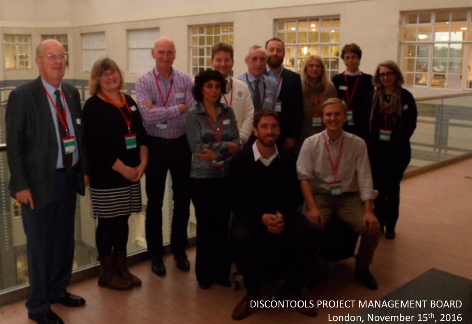
How big is the disease threat?
Google the phrase ‘animal disease outbreak’ and you will quickly learn that there are many emerging animal diseases being reported on a regular basis from all corners of the globe. This news should not be taken lightly, as the spread of disease can severely damage the health and welfare of a species, and where zoonotic, diseases are transmitted to humans and can have serious public health consequences. As humans, we rely heavily on animals for food, transportation, and companionship, so the prevention and control of animal disease is a critical issue.
What is DISCONTOOLS?
DISCONTOOLS is a searchable database built on key information collated in a standard format that then enables an analysis of gaps in diagnostics, vaccines, and pharmaceuticals. This, in turn, informs the prioritization scoring under the six headings of disease knowledge, impact on animal health and welfare, impact on public health, impact on wider society, impact on trade and availability of control tools. Total scores, scores by heading or combinations of headings and comparisons by zoonotic, epizootic and food producing animal complexes are all possible. To facilitate interpretation of the results, a two-page summary is also provided. The user can interrogate the data in multiple combinations and choose to download the data into Excel facilitating bespoke scoring and presentation.
How did the DISCONTOOLS collaboration come about?
The DISCONTOOLS database is the culmination of a very enjoyable journey of discovery that started in 2004. The European Technology Platform for Global Animal Health was set up at that point with funding from the European Commission (6th Framework Programme) with the Action Plan calling for, amongst other things, the further development of what was a first attempt at a disease prioritization model.
Following on from this, funding under the 7th Framework Programme of the European Commission facilitated the launch of DISCONTOOLS. It was co-author Jim Scudamore who came up with the name from DISease CONtrol TOOLS. We only realised the need for an acronym the day before the funding submission deadline and neither I nor co-author Morgane Delavergne could think of a better acronym or alternative name!

Why is DISCONTOOLS important?
DISCONTOOLS was necessary as we need to have a methodology to decide objectively on the research priorities on an on-going basis. In turn, this allows funders to focus funding on the research areas that are likely to deliver the greatest benefits. By having this focus, we speed up the development of new or improved tools and control programs to reduce the negative impact of animal diseases. The importance of this work becomes apparent in the context of the value of animal-based products being estimated at €154 billion per year – small progress delivers very significant economic benefits apart from animal health and welfare benefits.
The methodology was developed by the extraordinary collaboration of 342 animal health scientists from across the globe. I was struck by the generosity of people devoting time to the project, especially since they did not know me personally. It certainly reflects the importance of the work but also the possibility for researchers to work with and meet colleagues for the first time even though they had been working in similar research areas for many years.
How do we balance applied versus ‘blue sky’ research?
Throughout our journey, it became evident that we can never develop completely novel approaches without fundamental and purely curiosity-driven research. We discovered that 25% to 30% of all research in the animal health area is indeed ‘blue sky’. We need to protect this level of funding. In addition, funding should be spread over a range of areas as there are many species and many diseases whilst keeping a focus on filling the most important gaps that will have the greatest impact on reducing the negative impact of animal diseases.
How is DISCONTOOLS evolving?
The on-going development of the database should never finish as research and diseases evolve. It is thus great to see that DISCONTOOLS – via co-author and BMC Veterinary Research Section Editor Johannes Charlier – is now contributing to the newly formed Secretariat for the STAR-IDAZ International Research Consortium on Animal Health and as such shaping future research agendas around the globe.
The methodology is not written in stone. It can and should be further refined with experience. This is why we have developed an interactive database where everybody can contribute their ideas and suggestions to help this development.
What next for DISCONTOOLS?
With new funding in place from national funders of research in the EU and industry providing secretariat support, DISCONTOOLS is currently updating the database to ensure that the prioritization remains current as this is how the database will add value over time. At the time of writing updated disease information is available for 20 diseases. The on-going involvement with STAR-IDAZ gives DISCONTOOLS a global reach in terms of setting research priorities and will lead to a stronger integration of prioritization activities by various working groups at STAR-IDAZ, DISCONTOOLS, OIE, CABI and others. Most diseases are global issues where collaboration is a win:win for everybody!
Comments